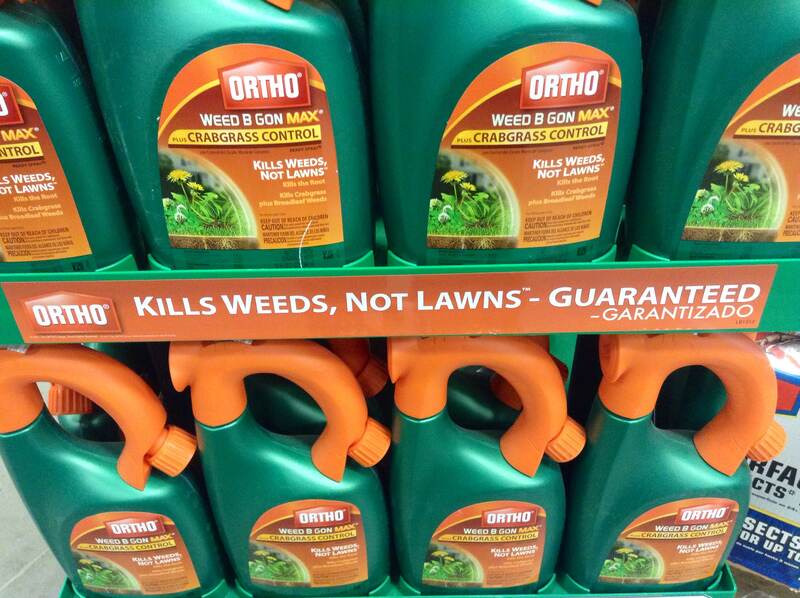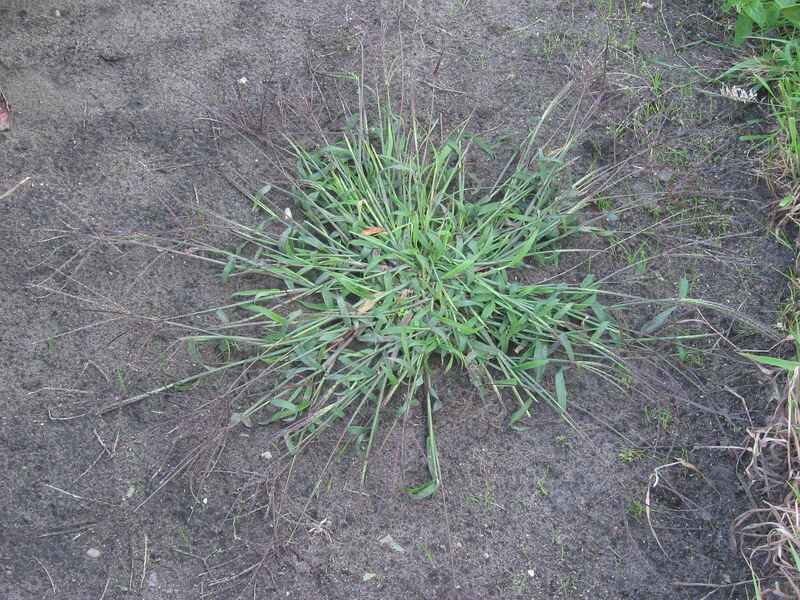
If you want to keep your lawn crabgrass-free, the best time to apply crabgrass preventer in Ohio is early spring.
You’ll want to apply crabgrass preventer by the middle of March or the beginning of April and no later than mid-April. Remember, the right time will depend on the soil temperature. When it consistently reaches 50 to 55 degrees Fahrenheit, that’s a good sign to start treating your lawn.
When to Apply Crabgrass Pre-Emergent in Ohio
The main rule of thumb is to get ahead of crabgrass before it sprouts. Once you see a single crabgrass seedling, it might be too late.
In Ohio, the optimal time to apply crabgrass preventer is mid-March to mid-April. However, the specific timing may vary depending on where you are in the state and the particular weather patterns that year.
*Note: Crabgrass seeds start growing in lawn areas where they get enough light, and the ground warms to about 50 to 55 degrees Fahrenheit for five consecutive nights with enough soil moisture.
Pro Tip: After you’ve applied crabgrass preventer, if there’s a lot of rainfall in the following weeks, apply it again about 6 to 8 weeks later to keep those weeds in check.
Regional Considerations in Ohio

Ohioans should keep in mind that the weather varies greatly throughout the state. While Ohio generally falls under the USDA’s Plant Hardiness Zones 5b through 6a, southern parts are in zones 6b to 7a.
Hence, Lake Erie shores can still be pretty chilly when things start to warm up down south, especially in the Cincinnati and Dayton areas.
Based on the 2024 average soil temperatures from Ohio State University’s weather data, here is a rough timeline for applying crabgrass preventer:
- Northern Ohio: In colder regions, soil tends to heat up later. According to data, crabgrass germination starts around April 10 to 15. So, apply the preventer between late March and early April.
- Central Ohio (Columbus): Crabgrass begins to germinate around March 31 to April 4. Aim to apply the crabgrass preventer between late March and very early April.
- Southern Ohio: In this region, the soil warms a bit earlier than in the northern regions. According to the data, crabgrass germination started around March 25 to April 1. Thus, you’ll need to apply preventer between early and mid-March.
Use these dates as a guide, but always watch the weather. Aim to apply crabgrass preventer just before soil temperatures reach around 55 degrees Fahrenheit four to five nights consecutively.
Pro Tip: Don’t start too early. These treatments begin to break down after about 60 days due to natural elements (such as rainfall) and soil microbes, which may reduce their effectiveness just when you need them most.
How to Time Your Crabgrass Application in Ohio

When it comes to crabgrass preventers, pinpointing the best time to apply it comes down to understanding the behavior of crabgrass and zoning into local Ohio temperature patterns.
Here are some tips that can give you the upper hand over this annual weed:
- Soil Thermometer: Buy a soil thermometer and start taking readings as winter begins to loosen its grip. Once you see the soil temperatures close to 50 degrees Fahrenheit consistently at a depth of about 2 to 3 inches, it’s time to spread the preventer.
- Consult Local Extension Services: Websites like OSU CFAES Weather System often provide current soil temperature data and help determine when to get out the spreader.
- Blooming Indicators: Nature also provides helpful hints through the blooming of certain plants. For example, once you start seeing forsythia or lilac bushes beginning to bloom, it is the best time for crabgrass preventer application.
- Growing Degree Days (GDD): It’s a tool to predict plant growth based on daily temperatures. Think of it like a score. As the temperature increases, so does the score. Once that score reaches about 200, lawn experts suggest it’s a good time to apply crabgrass preventer.
You can find out the “score” in your area by using online tools like MSU GDD Tracker; just type in your Ohio ZIP code.
If you’re looking for more information on tackling these pesky weeds, check out our guides:
- “Why Is Crabgrass Bad for the Lawn?“
- “How to Get Rid of Crabgrass in Your Yard”
- “When and How to Use Pre-Emergent Herbicides to Kill Your Lawn’s Weeds”
FAQ About When to Apply Crabgrass Preventer
Should you put crabgrass preventer on wet or dry grass?
You can apply the crabgrass preventer to either wet or dry grass. However, it is often recommended to apply it to dry grass and then water the lawn lightly (ideally within 24 hours after application). This way, the product will stick better to the soil and start working effectively.
Remember not to over-water, as it may cause runoffs.
When is it not the right time to apply crabgrass preventer?
Avoid applying crabgrass preventer during the following situations:
- Do not use crabgrass preventers when reseeding or overseeding lawns in early spring. These herbicides aren’t selective and can unintentionally kill the newly germinating lawn seeds.
- If crabgrass appears despite your best efforts, there are post-emergent herbicides that, while not as potent as preventers, can suppress it throughout the season.
- Avoid applying if heavy rain is forecasted within 48 hours after application. Excessive rainfall can wash away the preventer, reducing its effect on crabgrass seeds and resulting in patchy control.
Can you use crabgrass preventer in the summer?
If you missed the early spring window for applying crabgrass preventer, summer is not an ideal time to start. However, some products, like those containing dithiopyr, can be effective on young crabgrass plants up to three to four weeks old.
Be sure to read product labels for proper application instructions and timing carefully.
Hire a Lawn Care Professional
Maintaining a crabgrass-free lawn in Ohio requires careful timing and the right application technique. You need to catch the right temperature window, spread preventers evenly over your lawn, and then water the area appropriately – all while maintaining your regular lawn care tasks.
If this feels too much to keep track of, why not leave it to professionals? Whether you are located in Cleveland or Columbus, LawnStarter can connect you with top lawn care experts near you, ready to take over.
More Lawn Care and Landscaping Resources for Ohio
- “When to Apply Weed and Feed in Ohio”
- “Most Common Weeds of Ohio: How to Identify and Control Them”
- “Best Ohio Native Plants”
- “Best Grass Seed for Ohio”
- “How to Prepare Your Lawn for Winter in Ohio”
- “6 Common Lawn Pests in Ohio”
Main Image Credit: Christian Delbert / Adobe Stock





